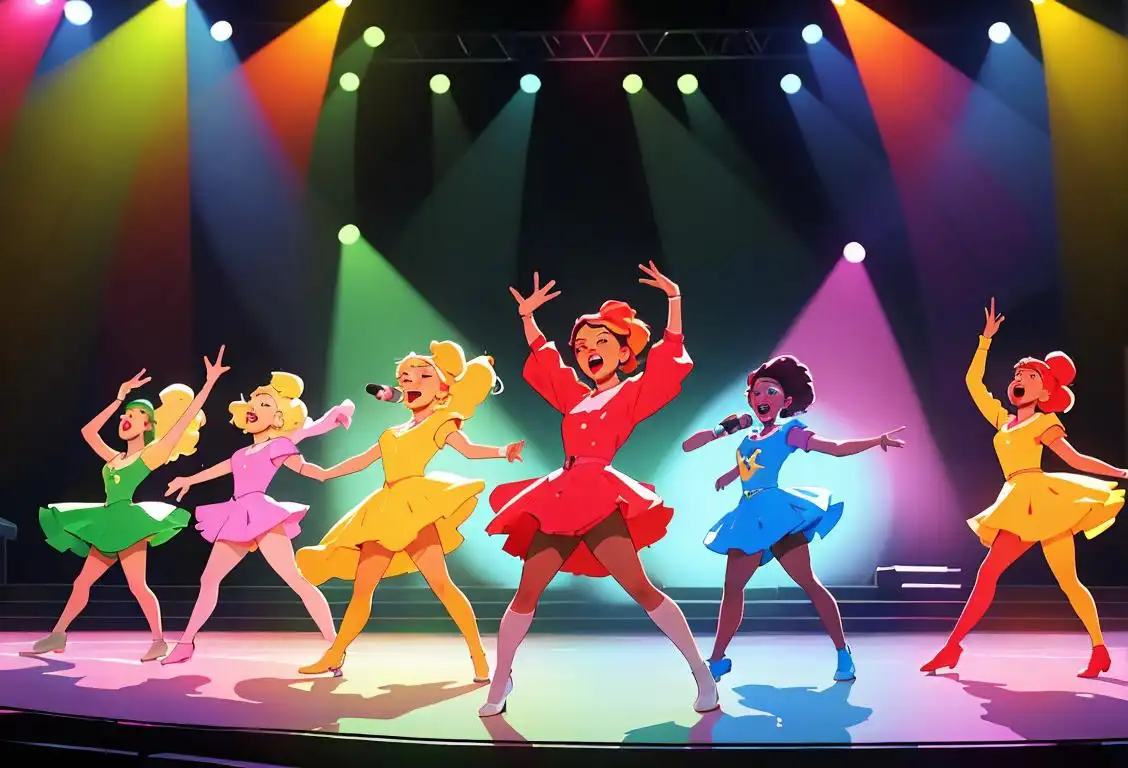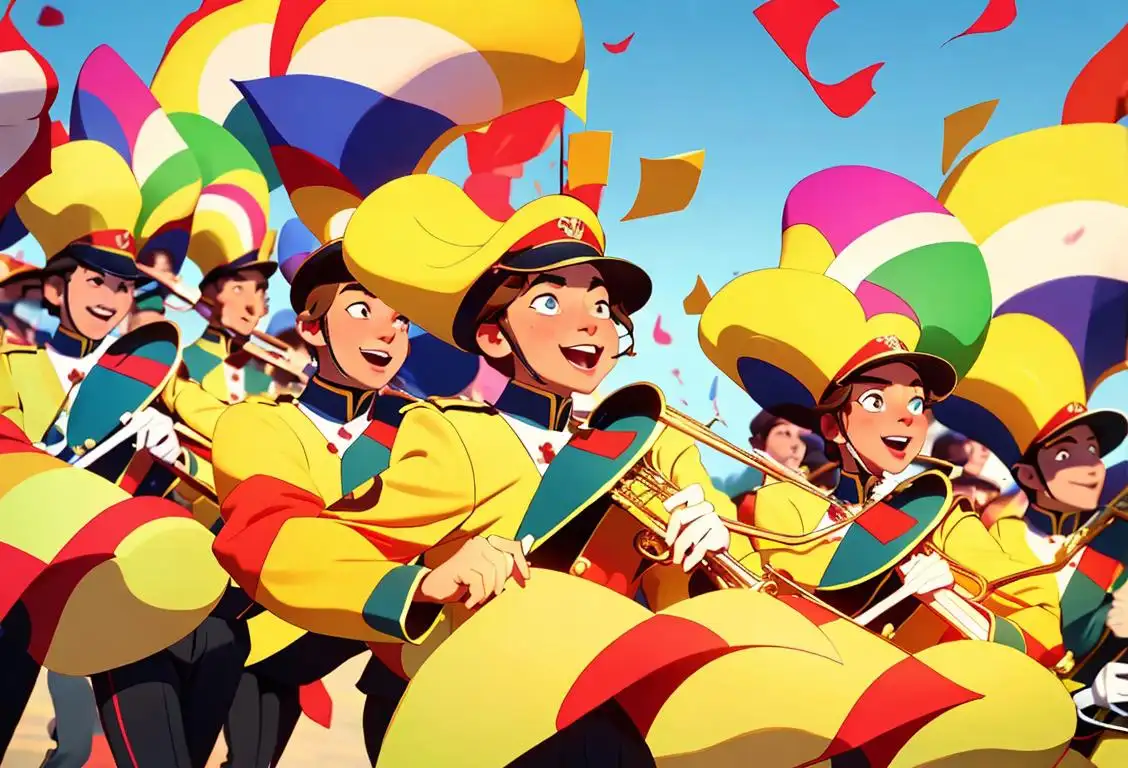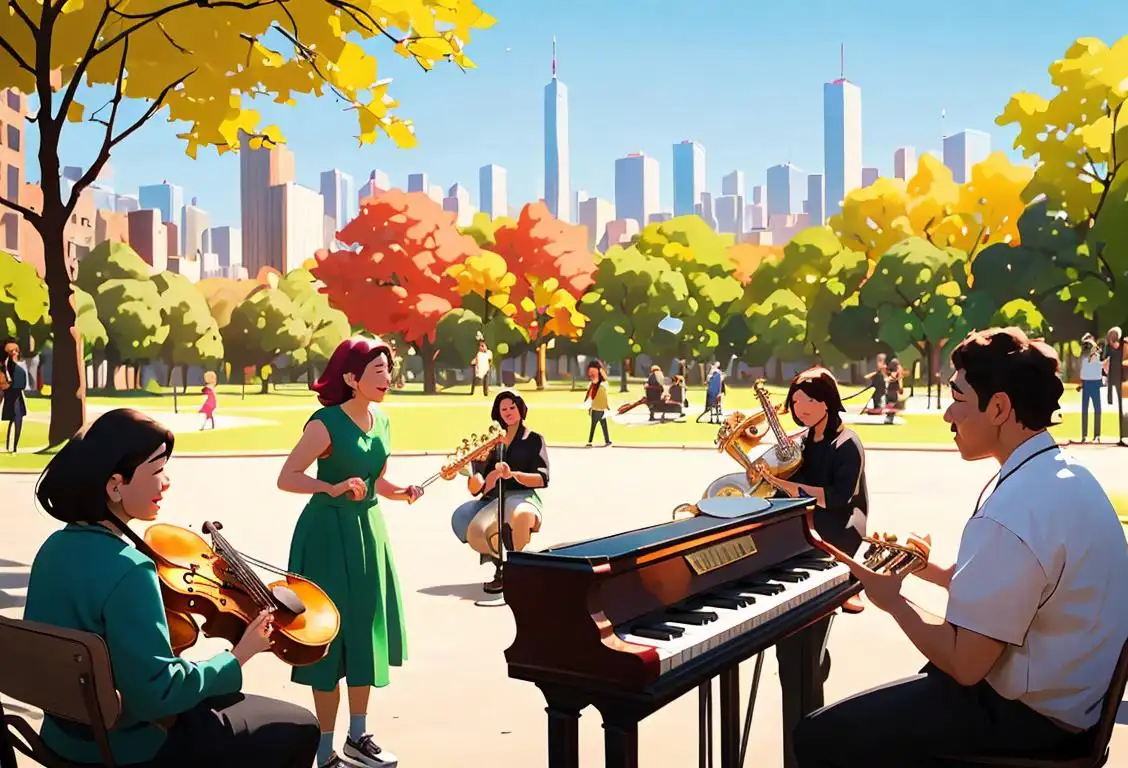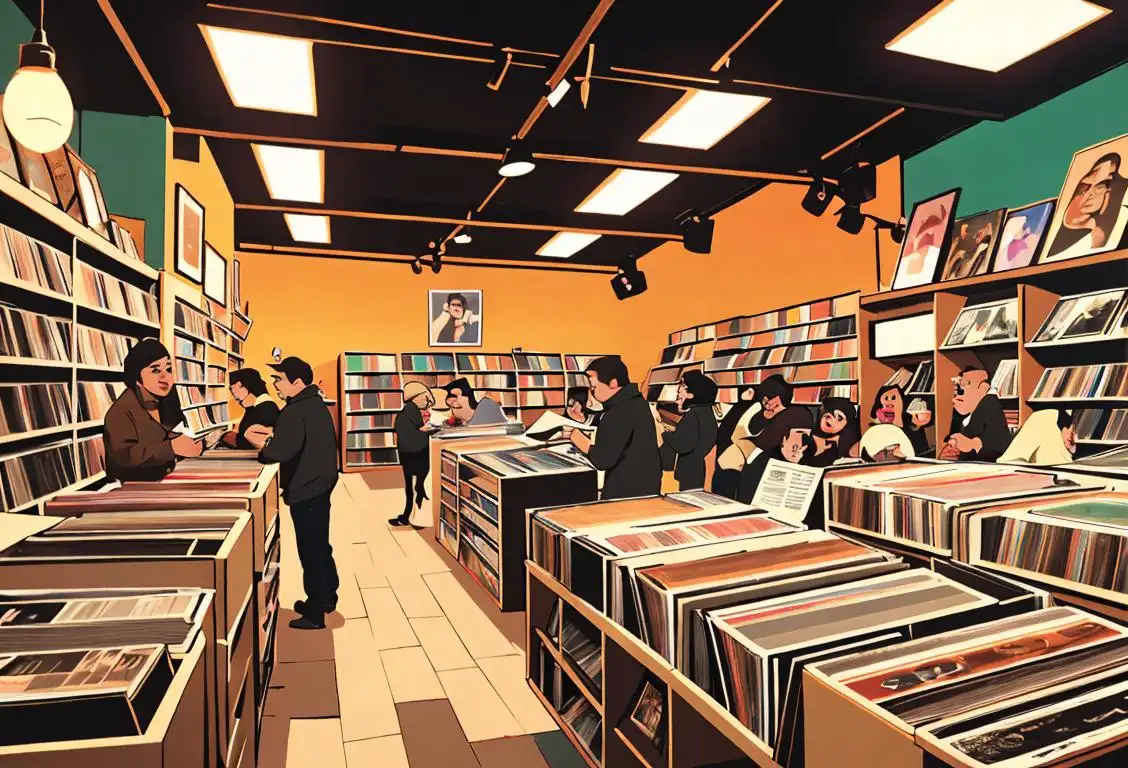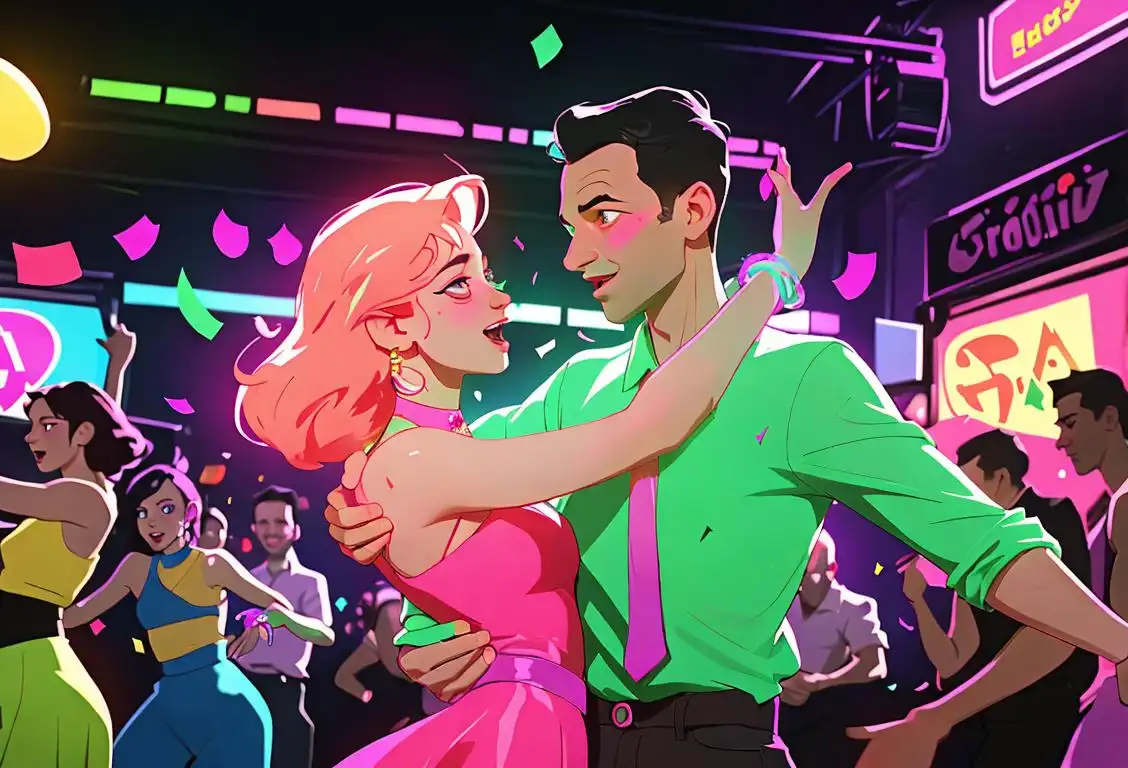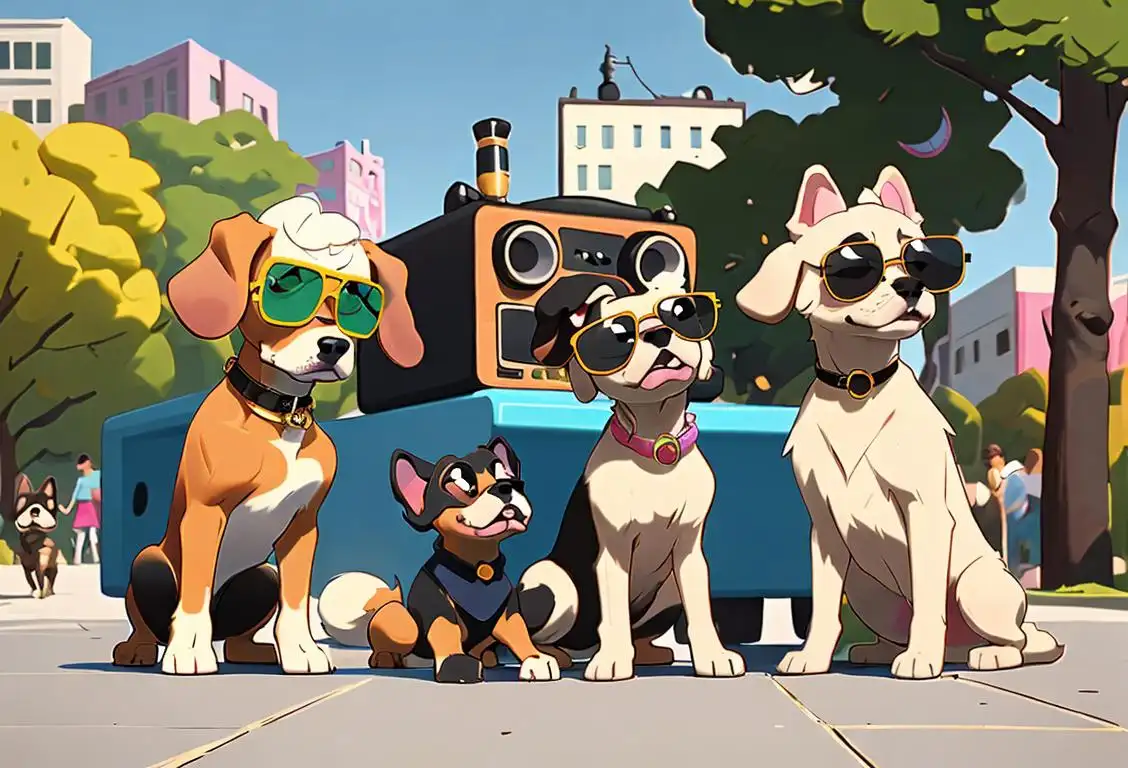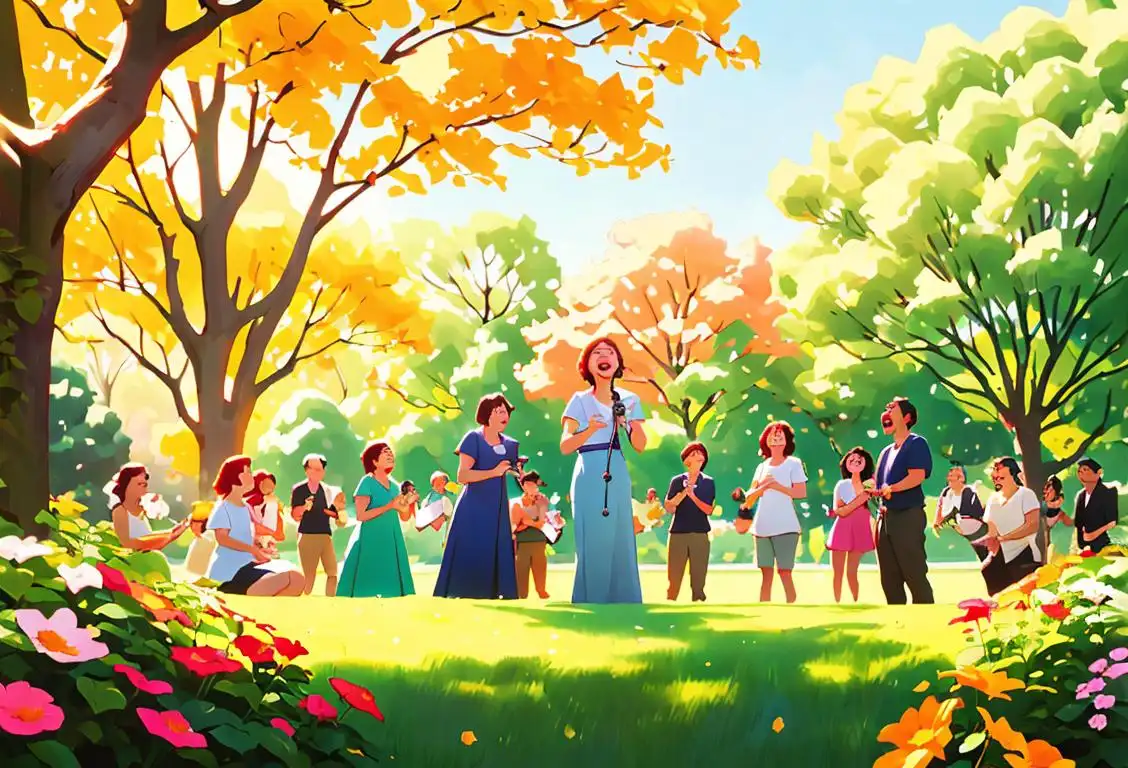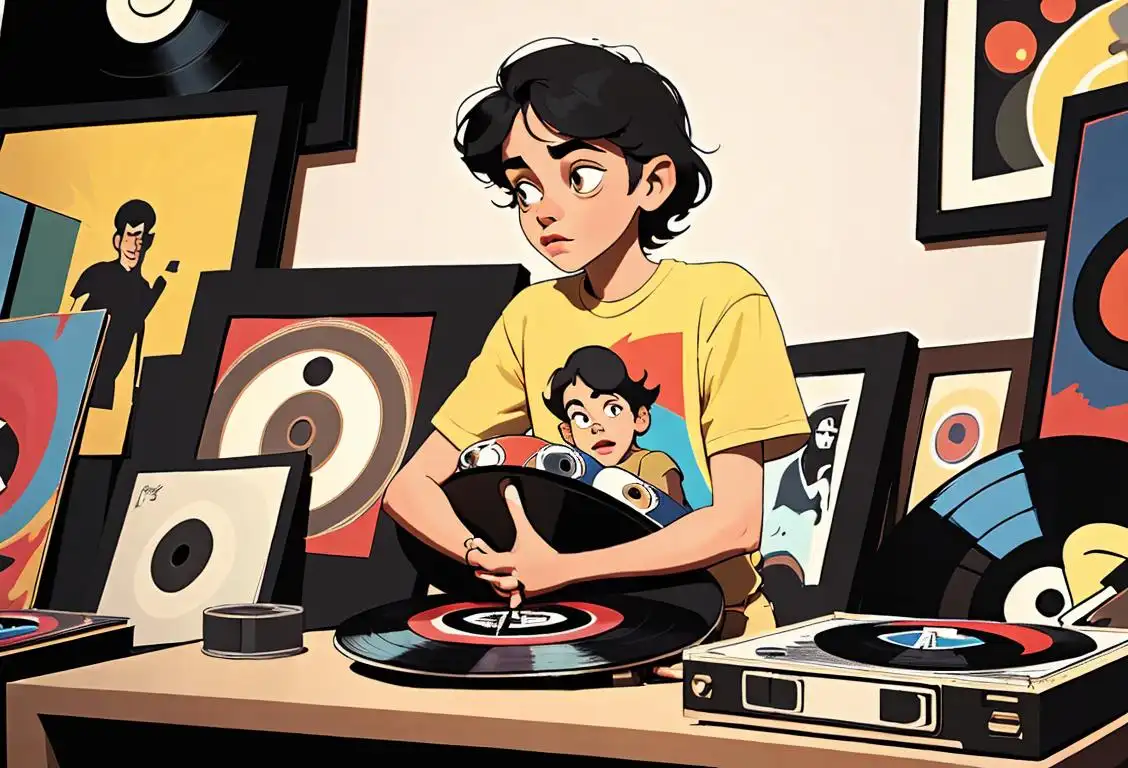National Fiddling Day
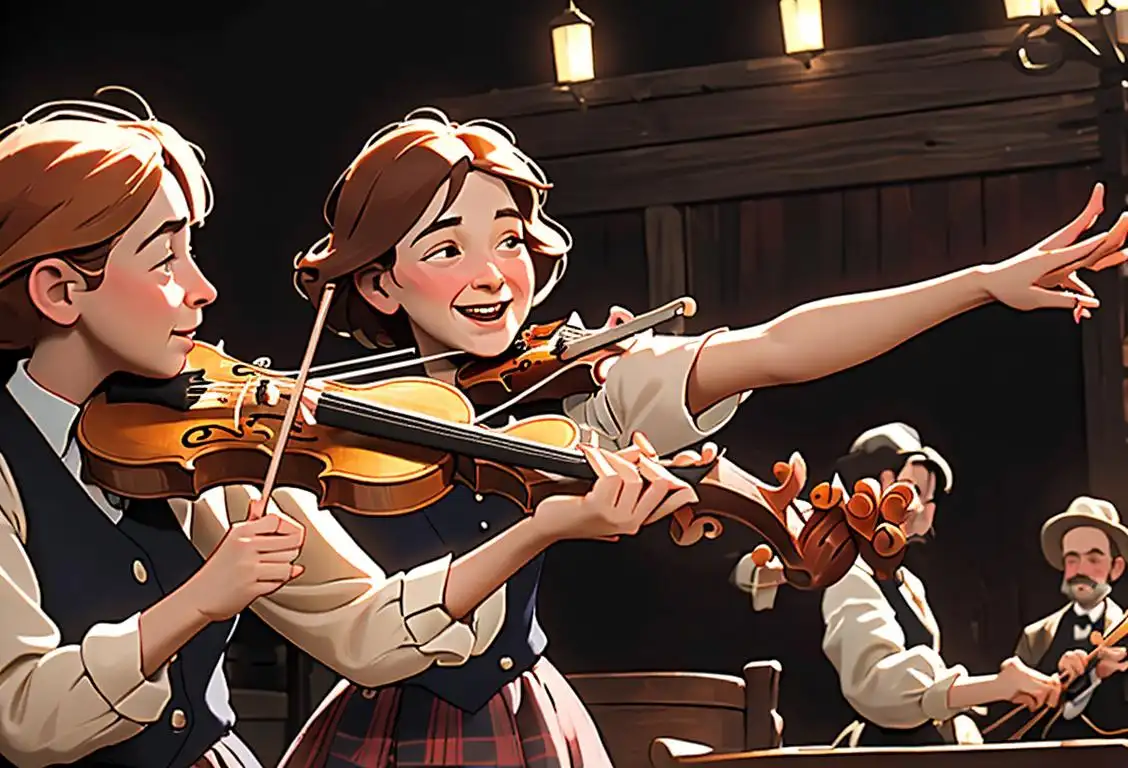
Welcome to the wacky world of National Fiddling Day! Prepare to be entertained, toe-tapped, and danced around like a jovial jester. This delightful day celebrates the age-old art of fiddling, where skilled musicians coax enchanting melodies from their trusty fiddles. So, pull up a chair, put on your dancing shoes, and let's dive into the fascinating history of National Fiddling Day!
When is Fiddling Day?
It's national fiddling day on the 16th May.
A Lively History Lesson
Picture yourself in a quaint pub, the air filled with merry laughter, the clinking of glasses, and the delightful strains of a fiddle. This is the scene that National Fiddling Day conjures up, and it all began with a passion for the magical tunes produced by skilled fiddlers.
The origins of National Fiddling Day are as old as the hills. Fiddling has been a beloved musical tradition in many countries for centuries. It's impossible to say exactly when and where fiddling first started, but some historians believe it dates back to ancient times. Back in the day, fiddlers would gather around as musicians played lively tunes on their fiddles, bringing joy and merriment to any occasion.
Fast forward to modern times, and fiddling has evolved into various genres, including bluegrass, country, and Celtic music. National Fiddling Day became an official celebration to pay homage to these talented fiddlers and the joy they bring to our lives.
Toe-Tapping Traditions
Celebrating National Fiddling Day is like stepping into a lively hoedown. People across the country host fiddle-focused events, concerts, and even fiddle competitions. Fiddlers from near and far come together to showcase their skills and keep this vibrant tradition alive and kicking.
Whether you're a seasoned fiddle fanatic or a curious newcomer, National Fiddling Day offers something for everyone. From free fiddle lessons to lively concerts where you can dance the night away, this day is all about celebrating the incredible musical talents of fiddlers.
Fiddling Fun Fact
Did you know that the world record for the largest fiddle ensemble was set in Galax, Virginia, USA? Back in 2008, an astounding 431 fiddlers came together and played their hearts out, creating a symphony of strings that will go down in fiddling history!
History behind the term 'Fiddling'
12th century
The Early Origins
The term 'fiddling' traces its roots back to the 12th century, derived from the Old English word 'fidul', meaning a stringed musical instrument similar to a violin. The instrument was popular across Europe and played a significant role in many traditional folk music styles.
15th century
The Birth of the Fiddle
The term 'fiddling' originates from the 15th century when the modern violin, or fiddle, began to emerge in Europe. The fiddle was a versatile instrument that could be played in a variety of styles, making it popular among musicians of both classical and folk traditions. The early fiddle was smaller and had fewer strings than the modern violin, but its basic construction and playing technique were quite similar.
1600s
The Origins of the Violin
The history of fiddling can be traced back to the 1600s when the modern violin, the instrument commonly associated with fiddling, was first introduced. Its evolution can be attributed to various stringed instruments like the medieval fiddle and the rebec. The violin quickly gained popularity across Europe and became an integral part of numerous musical traditions.
1700s
The Emergence of the Fiddle
During the 1700s, the term 'fiddle' started to gain popularity as a colloquial term for the violin. The word 'fiddle' likely originated from the Old English word 'fithele,' which referred to a stringed instrument played with a bow. It was a versatile instrument that was commonly used in various musical genres, including folk, classical, and traditional music.
circa 900 AD
The Ancient Origins
Fiddling has its roots in ancient cultures. The predecessors of the modern violin can be traced back to around 900 AD when the Byzantines developed a bowed string instrument known as the lira. This early instrument was played by drawing a bow across the strings, producing a melodic sound similar to the fiddle we know today.
Early 11th century
The origin of the term 'fiddling'
In the early 11th century, the term 'fiddling' first emerged. It originated from the Middle English word 'fithel' which means a type of stringed musical instrument similar to a violin. This term gradually evolved and became associated with the act of playing music on the fiddle.
1800s
Fiddle Virtuosos and Folk Traditions
In the 1800s, the fiddle began to establish itself as a prominent instrument in both classical and folk music. Fiddle virtuosos, such as Niccolò Paganini, showcased the violin's incredible capabilities, inspiring musicians to explore its possibilities further. Meanwhile, the fiddle also became deeply entrenched in traditional folk music across different regions, often accompanying social gatherings, dances, and celebrations.
11th Century
The Normans Spread Fiddling
During the medieval period, the Normans introduced fiddling to England after their conquest. Fiddling became popular among the enthusiastic Normans and spread throughout the country. It was during this time that fiddling was associated with rustic folk traditions and dancing, becoming an integral part of rural festivities.
16th century
The Violin Emerges
By the 16th century, the instrument known as the violin had evolved and gained popularity. Often associated with classical music, the violin became a staple in orchestras and chamber music ensembles. The act of playing the violin with skill and dexterity came to be known as 'fiddling'.
16th century
The rise of the fiddle as a popular instrument
During the 16th century, the fiddle gained immense popularity among various cultures and communities. It quickly became synonymous with lively and energetic music, often played at social gatherings, dances, and celebrations. The vibrant and catchy tunes produced by the fiddle captured the attention of people from different walks of life.
1800s
Rise of Traditional Fiddle Music
During the 19th century, fiddle music flourished, especially in the British Isles and North America. Traditional fiddle tunes, often performed at social gatherings and dances, became an essential part of rural and folk music cultures. Fiddle players showcased their skills by adding ornamentation, improvisation, and variations to the melodies, giving fiddling its distinct style.
16th century
Fiddle Music in Renaissance Period
During the 16th century, the fiddle gained significant popularity, particularly in the Renaissance period. Fiddle music became an integral part of courtly entertainment and was featured in dance music, chamber ensembles, and solo performances. Fiddlers played an essential role in social gatherings, providing lively and rhythmic music for dancing and entertainment.
19th century
Fiddle Traditions in Folk Music
During the 19th century, 'fiddling' became closely tied to various folk music traditions in different parts of the world. In Europe, especially in Ireland and Scotland, fiddle music played a central role in traditional dances and gatherings. These styles incorporated unique techniques and ornamentation, distinguishing them from classical violin playing.
1920s
Fiddle in American Country Music
The 1920s marked the rise of country music in the United States, and the fiddle played a pivotal role in shaping its distinctive sound. Fiddle tunes, influenced by various European folk traditions, blended with American styles like blues and gospel, creating a vibrant and energetic sound that became synonymous with country music. Fiddle players like Eck Robertson and Bob Wills popularized this fusion of styles.
17th century
Fiddling and Folk Music
In the 17th century, fiddling became closely associated with folk music traditions, particularly in Ireland, Scotland, and other Celtic regions. Fiddlers played a crucial role in preserving and passing down traditional tunes and melodies, often performed at local gatherings and celebrations. The lively and energetic style of fiddling added a vibrant touch to these gatherings, becoming an integral part of the cultural fabric.
1920s
The Birth of Country Music
In the 1920s, country music emerged as a popular genre, heavily influenced by fiddle playing. Pioneering artists such as Eck Robertson and Fiddlin' John Carson gained fame for their energetic and emotive fiddle performances. The fiddle played a crucial role in the development of country music, contributing to its signature sound and storytelling tradition.
19th century
Fiddle music and cultural influence
In the 19th century, fiddle music began to play a significant role in the cultural fabric of various regions. It became an integral part of folk music traditions, especially in areas such as Ireland, Scotland, Canada, and the United States. Fiddle tunes were passed down through generations, contributing to the preservation of cultural heritage and creating a sense of community.
16th Century
The Renaissance Reshapes Fiddling
In the 16th century, during the Renaissance, the fiddle underwent significant changes. Italian violin makers, such as Andrea Amati and his descendants, refined the instrument's construction and improved its sound quality. This era marked the transition from the medieval fiddle to the violin as we know it today.
20th century
Fiddle Music in North America
In the early 20th century, as European immigrants settled in North America, they brought with them their fiddle traditions. Fiddle music became an integral part of North American folk and country music. Regions like Appalachia, Cajun Louisiana, and the Canadian Maritimes developed their own distinct fiddle styles, blending European influences with local cultural elements.
20th century
Fiddling in popular music
During the 20th century, the influence of fiddling extended beyond traditional and folk music genres. Fiddling techniques and styles started to find their way into popular music, especially in genres like country, bluegrass, and jazz. Prominent fiddlers, such as Charlie Daniels and Stephane Grappelli, showcased the versatility and technical prowess of the instrument, captivating audiences worldwide.
1930s
Jazz and Swing Fiddle
During the 1930s, fiddling skillfully merged with jazz and swing music. Fiddlers like Stuff Smith and Svend Asmussen pushed the boundaries of traditional fiddle playing by introducing jazz improvisation techniques to their performances. Their fusion of fiddle and jazz brought a new level of virtuosity and innovation to the instrument.
17th Century
The Baroque Era and Fiddle Music
Throughout the 17th century, the Baroque period, the fiddle gained popularity as a prominent instrument in both folk and classical music. Virtuoso composers like Arcangelo Corelli and Antonio Vivaldi composed beautiful pieces specifically for the violin, which inspired countless musicians to explore the instrument's expressive capabilities.
18th century
Fiddle Tunes in America
As European settlers immigrated to America in the 18th century, they brought with them their fiddles and musical traditions. Fiddle playing spread rapidly throughout the colonies and played a significant role in shaping early American music. Fiddle tunes, infused with influences from various cultures such as Irish, Scottish, English, and African, contributed to the development of American folk and traditional music. Fiddle contests and gatherings became popular events, showcasing the technical skill and creativity of fiddlers.
1930s
The Swing Era and Fiddle Jazz
During the 1930s, the Swing Era brought about a significant change in the role of the fiddle in popular music. As jazz music evolved, fiddlers began incorporating swing rhythms, improvisation, and virtuosic solos into their performances. Renowned jazz violinists like Stuff Smith and Joe Venuti gained prominence, showcasing the fiddle's adaptability and expanding its horizons beyond traditional genres.
19th century
Fiddling in Popular Music
In the 19th century, the popularity of fiddling expanded beyond folk and traditional music into the realm of popular music. Fiddle tunes began to be incorporated into minstrel shows, vaudeville performances, and early country music. The virtuosic and expressive nature of fiddling made it a captivating instrument for both live performances and recordings. Fiddle players became iconic figures in popular music, influencing the development of various genres.
Present day
Continued appreciation and evolution of fiddling
In the present day, fiddling continues to thrive as a cherished and versatile musical tradition. It is celebrated through festivals, competitions, and gatherings dedicated to showcasing the skills of fiddlers from various backgrounds. While preserving its roots, fiddling has also evolved, incorporating influences from different genres and cultures, ensuring its enduring place in the world of music.
21st century
Fiddle's Global Popularity
Today, the term 'fiddling' has expanded its scope beyond traditional folk music. Fiddle playing has gained global popularity in various genres, including bluegrass, country, jazz, and even rock. Modern fiddlers continue to push the boundaries of the instrument, exploring new techniques, and adapting it to contemporary musical styles.
1960s
Revival of Traditional and Folk Music
The 1960s witnessed a resurgence of interest in traditional and folk music. Fiddle players, inspired by the folk music revival, started exploring regional and international fiddle styles. Artists like Jean Carignan (French-Canadian fiddler) and Tommy Jarrell (old-time Appalachian fiddler) gained recognition for their preservation and promotion of traditional fiddle music.
1960s
Fiddle in Folk Revivals
The 1960s witnessed a folk music revival, and the fiddle experienced a resurgence in popularity. Artists like Jean Carignan and Doc Watson brought the fiddle back into the forefront of folk music, contributing to a renewed appreciation for traditional and acoustic instruments. The fiddle became a symbol of cultural heritage and nostalgia, inspiring a new generation of musicians to explore its rich history.
19th Century
The Golden Age of Fiddling
The 19th century witnessed the golden age of fiddling, with various folk traditions thriving across different cultures. In Ireland, for example, traditional Irish fiddling took center stage, playing a vital role in Irish music and cultural identity. Similarly, in America, fiddle music played a significant role in Appalachian and Bluegrass genres.
20th century
Fiddling across Genres
The 20th century witnessed the integration of fiddling into various musical genres, including jazz, blues, bluegrass, and rock. Fiddlers like Jean-Luc Ponty and Vassar Clements pushed the boundaries of traditional fiddling, incorporating improvisation and experimentation into their playing. Fiddling continues to evolve and adapt to contemporary musical styles while staying deeply rooted in its cultural heritage.
Present
Continued Popularity and Diversity
Fiddling continues to thrive today, encompassing various genres and styles. From Celtic fiddling in Ireland to Western swing fiddling in Texas, the instrument has become an integral part of many cultural and musical traditions worldwide. Fiddling competitions and festivals attract enthusiasts and showcase the talent and diversity of fiddle playing.
20th Century
Fiddling in Popular Music
Fiddling continued to evolve in the 20th century, finding its way into popular music genres. Artists like Bob Wills and Charlie Daniels seamlessly integrated fiddle tunes into country and rock music, introducing a new generation to the infectious energy of fiddle playing.
Present Day
Continuity and Innovation
Today, the term 'fiddling' embraces a wide spectrum of musical styles and techniques. While it still evokes images of traditional folk music, the fiddle has transcended boundaries, infiltrating genres like bluegrass, country, rock, and even contemporary classical music. Fiddle competitions and festivals continue to celebrate the instrument's versatility, ensuring its legacy remains vibrant and inspiring future generations of fiddlers.
Present Day
Fiddling's Lasting Legacy
Today, fiddling remains an integral part of diverse musical traditions worldwide. Whether it's the lively dances of Celtic music, the intricate melodies of classical violin repertoire, or the soulful improvisations of jazz, fiddling continues to captivate audiences and inspire musicians with its rich history and timeless appeal.
Did you know?
Did you know that the world record for the largest fiddle ensemble was set in Galax, Virginia, USA? Back in 2008, an astounding 431 fiddlers came together and played their hearts out, creating a symphony of strings that will go down in fiddling history!Tagged
fun celebration musicFirst identified
26th March 2015Most mentioned on
16th May 2015Total mentions
282Other days
Stadium Concert And Had To Add Another Day
Marching Arts Day
Music Day
Record Store Day
Giggs Day
Dogg Day
Drummer Day
Sing Out Day
Album Day
Hate On Blackpink Day
